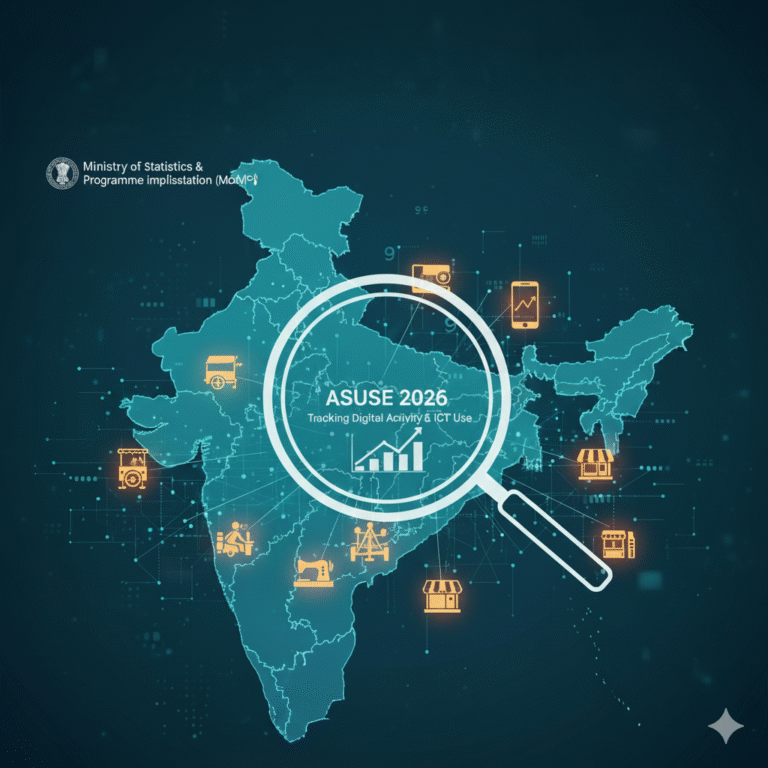
Key Highlights:
- GIC Singapore leads with ₹33,332 crore ($4 billion) investment across five infrastructure sectors including transport, power, and digital infrastructure, making it the most active foreign sovereign wealth fund in India
- Canadian pension funds invested over $75 billion cumulatively in Indian infrastructure, with Canada Pension Plan Investment Board, Ontario Teachers’, and other funds targeting long-term infrastructure assets
- Section 10(23FE) deadline extended to March 2030 providing tax exemptions on dividends, interest, and long-term capital gains for notified SWFs and pension funds investing in Indian infrastructure entities
- India needs $840 billion urban infrastructure investment over next 15 years according to World Bank, with only 5% currently financed through private sources while government funds 75% of city infrastructure
- Civil society oversight crucial for accountability as CENFA report highlights need for transparency and environmental safeguards in SWF and pension fund infrastructure investments to protect public interest
The Trillion-Dollar Infrastructure Challenge
India stands at a critical juncture in its development journey, requiring unprecedented infrastructure investment to support its economic aspirations. The World Bank estimates India needs $840 billion for urban infrastructure alone over the next 15 years, averaging $55 billion annually. With 600 million people expected to live in cities by 2036, representing 40% of the population, the infrastructure financing challenge has become a national imperative. worldbank
Traditional financing sources are insufficient: currently, central and state governments finance over 75% of city infrastructure, while urban local bodies contribute 15% through their own revenues. Only 5% of infrastructure needs are financed through private sources, creating a massive financing gap that threatens India’s development trajectory. India’sUrbanInfrastructure
In this context, Sovereign Wealth Funds (SWFs) and Pension Funds (PFs) have emerged as crucial players, bringing long-term capital and patient investment horizons that align with infrastructure project requirements. The Centre for Financial Accountability (CENFA) report reveals growing interest among these institutional investors in Indian infrastructure, driven by attractive security and substantial capital requirements.
For UPSC aspirants and governance professionals, understanding these financial instruments becomes essential as they reshape India’s development financing landscape and raise important questions about accountability, transparency, and sustainable development.
Understanding Sovereign Wealth Funds and Pension Funds
Defining Institutional Infrastructure Investors
Sovereign Wealth Funds represent state-owned investment vehicles that deploy government surpluses and reserves in long-term investments. Section 10(23FE) of the Income Tax Act defines SWFs as funds that are: incomtaxindia.gov
- Wholly owned and controlled by foreign governments directly or indirectly
- Set up and regulated under foreign country laws
- Earnings credited to government accounts without private benefit
- Assets vesting in government upon dissolution
Pension Funds are institutional investors managing retirement savings for workers, seeking stable, long-duration returns that match their long-term liability profiles. These funds typically have investment horizons spanning 20-30 years, making them natural fits for infrastructure projects.
Traditional vs. Emerging Market Focus
Historically, SWFs and PFs concentrated investments in developed economies, seeking stability and regulatory certainty. However, significant capital flows are now shifting toward developing economies like India due to:
Higher Return Potential: Infrastructure projects in emerging markets offer superior risk-adjusted returns compared to developed market alternatives. india-briefing
Regulatory Incentives: Government policies like Section 10(23FE) tax exemptions make Indian infrastructure investments more attractive. taxmann
Market Size and Growth: India’s massive infrastructure needs and economic growth trajectory create long-term investment opportunities.
Investment Characteristics and Objectives
Long-term Investment Horizon: Both SWFs and PFs seek investments with 15-30 year time horizons, perfectly matching infrastructure project lifecycles.
Stable Cash Flow Requirements: Infrastructure assets provide predictable cash flows through user charges, toll collections, and regulated tariffs, meeting institutional investor needs for stable returns.
Risk-Return Profile: Infrastructure investments offer moderate risk with inflation-hedged returns, suitable for conservative institutional investment mandates.
Investment Trends in Indian Infrastructure: The Big Players
Singapore’s GIC: The Infrastructure Giant

Government of Singapore Investment Corporation (GIC) has emerged as the most active foreign sovereign wealth fund in Indian infrastructure, with investments across five key sectors:
Transport Sector Leadership:
- ₹4,400 crore ($530 million) in transport infrastructure
- IRB Infrastructure investment of over $615 million in road assets spanning 5,900 km across six states
- Enterprise value of IRB portfolio: $3.1 billion upon construction completion
- Joint venture with Sterlite Power for $4 billion power transmission platform targeting $13 billion market opportunity indbiz.gov
Power and Renewables:
- ₹980 crore investment in power sector
- ₹16,000 crore ($1.9 billion) in renewables
- 49% stake in Sterlite Power joint venture for green corridor development
- Focus on 500 GW renewable energy target supporting India’s clean energy transition
Digital Infrastructure:
- ₹933 crore investment in digital infrastructure sector
- Sole foreign SWF presence in this critical sector
- Support for India’s digital transformation initiatives
Real Estate:
- ₹11,672 crore co-investment with Brookfield India REIT
- Diversified real estate portfolio supporting urbanization needs
Canadian Pension Fund Powerhouse
Canadian pension funds represent the largest cumulative investors in Indian infrastructure with over $75 billion invested: journal.iimshillong
Canada Pension Plan Investment Board (CPPIB):
- Major investments across transport and power sectors
- Long-term strategic partnerships with Indian infrastructure developers
- Focus on operational assets with established cash flow profiles
Ontario Teachers’ Pension Plan:
- Significant renewable energy investments
- Airport infrastructure participation
- Technology-enabled infrastructure focus
Investment Durability: These investments remain durable and long-term with little chance of strategy change based on short-term diplomatic events, reflecting mutual utility for both Indian development needs and Canadian pension fund return requirements.
Other Major Institutional Players
Abu Dhabi Investment Authority (ADIA):
- Traditional infrastructure investments
- Focus on energy and transport sectors
- Long-term strategic approach to Indian market
Qatar Investment Authority (QIA):
- ₹7,140 crore lead investment in power sector
- Aggressive infrastructure expansion strategy
- Focus on energy security and sustainability
National Investment and Infrastructure Fund (NIIF):
- India’s sovereign wealth fund with $5 billion target expanding to $10 billion by 2027
- Government backing alongside global investors including Temasek, ADIA, and AustralianSuper
- Focus on urban infrastructure demand and significant funding gap
Policy Framework: Regulatory Environment
Tax Exemption Architecture
Section 10(23FE) of the Income Tax Act 1961 provides comprehensive tax exemptions for specified SWFs and pension funds investing in Indian infrastructure: incometaxindia.gov
Eligible Income Types:
- Dividend income from infrastructure investments
- Interest income on infrastructure debt instruments
- Long-term capital gains from infrastructure asset sales
Investment Vehicle Options:
- Category-I or Category-II Alternative Investment Funds (AIFs) with minimum 50% investment in eligible infrastructure entities
- Infrastructure Investment Trusts (InvITs) providing portfolio-based infrastructure exposure
- Domestic companies with minimum 75% investment in infrastructure entities (post-April 2021)
- Infrastructure Finance Companies and Infrastructure Debt Funds
Recent Policy Extensions:
The CBDT extended the investment deadline from March 31, 2025 to March 31, 2030, providing additional five years for SWFs and pension funds to make qualifying investments. This extension reflects government commitment to attracting long-term infrastructure capital.
Regulatory Clarity and Reforms
Streamlined Approval Processes: The government has simplified approval mechanisms for institutional investors, reducing bureaucratic hurdles and ensuring regulatory certainty.
Enhanced Direct Access: Foreign institutional investors can now directly access Indian infrastructure projects through multiple vehicle structures, bypassing traditional intermediation.
Risk Mitigation Frameworks: Government guarantees and viability gap funding provide additional comfort to institutional investors in commercially challenging but socially important projects.
SEBI Regulatory Evolution
Securities and Exchange Board of India (SEBI) has proposed broadening strategic investor definitions in InvITs, potentially unlocking additional waves of long-term capital from:
- Public financial institutions
- Provident funds
- Insurance funds
- Other domestic institutional investors
This regulatory evolution aims to create a stronger foundation for India’s infrastructure financing by expanding the investor base beyond foreign institutions.
Critical Challenges and Governance Concerns
Accountability and Transparency Deficits
CENFA’s analysis reveals significant concerns about accountability mechanisms for institutional investor infrastructure projects:
Limited Public Oversight: SWF and pension fund investments often occur through private equity structures that bypass traditional public procurement transparency requirements.
Information Asymmetries: Commercial database reliance for investment tracking creates incomplete public information about project details, stakeholder involvement, and social impacts.
Decision-Making Opacity: Private investment structures limit public participation in project selection and design, potentially excluding community voices in infrastructure development.
Social and Environmental Safeguards
Profit-Driven Priorities: Institutional investors’ fiduciary duties to beneficiaries can create conflicts with public interest objectives, particularly regarding:
- Affordable access to infrastructure services
- Environmental protection and sustainability
- Displacement and resettlement of affected communities
- Long-term social impact considerations
Regulatory Gaps: Current frameworks lack comprehensive environmental and social safeguard requirements specifically tailored for institutional investor infrastructure projects.
Community Impact Assessment: Absence of mandatory community consultation and social impact assessment processes for privately financed infrastructure projects.
Fiscal Sovereignty and Dependency Concerns
Foreign Capital Dependency: Heavy reliance on foreign institutional capital raises questions about:
- Long-term fiscal sovereignty
- Vulnerability to external economic shocks
- Alignment of foreign investor interests with national development priorities
Asset Control Questions: Significant foreign ownership stakes in critical infrastructure assets create potential strategic vulnerabilities and limit domestic policy flexibility.
Revenue Extraction: Profit repatriation by foreign institutional investors reduces domestic resource availability for additional infrastructure development.
Civil Society Response and Oversight Mechanisms
Growing Awareness and Engagement
Civil society organizations are increasingly recognizing the importance of monitoring institutional investor activities in infrastructure development:
Information Advocacy: CENFA and other organizations work to increase public awareness about emerging trends in infrastructure financing and potential social and environmental implications.
Transparency Campaigns: Advocacy for enhanced disclosure norms regarding institutional investment terms, conditions, and social impacts.
Community Mobilization: Grassroots organizations increasingly engage with infrastructure projects to ensure community voices are heard in planning and implementation processes.
Best Practices in Oversight
International models demonstrate effective civil society engagement in infrastructure governance:
Participatory Project Design: Community involvement in project selection and risk assessment ensures local needs are prioritized.
Monitoring and Evaluation: Independent monitoring of project delivery and climate impact by civil society organizations.
Information Access: Transparent disclosure of project costs, timelines, and social impacts enables informed public participation.
Grievance mechanisms: Accessible complaint and redressal systems for project-affected communities.
Policy Advocacy and Reform
Civil society organizations advocate for:
- Mandatory social and environmental impact assessments
- Community consultation requirements
- Transparent project selection processes
- Regular public reporting on project outcomes and social impacts
World Bank Assessment and Infrastructure Needs
The $840 Billion Urban Challenge
The World Bank’s comprehensive assessment reveals the magnitude of India’s urban infrastructure challenge:
Sectoral Breakdown:
- Basic municipal services: $450 billion (53% of total needs)
- Water supply and sewerage systems
- Municipal solid waste management
- Storm-water drainage
- Urban roads and street lighting
- Mass transit systems: $390 billion (47% of total needs)
Current Financing Gap: With government’s annual urban infrastructure investment at only $16 billion as of 2018, private financing must fill the majority of the gap.
Demographic Pressure: 600 million urban population by 2036 will strain existing infrastructure and demand green, smart, inclusive, and sustainable urbanization.
Policy Recommendations from World Bank
Capacity Building: Expanding city agency capacities to deliver infrastructure projects at scale through:
Private Sector Engagement: Creating conducive environments for urban local bodies to borrow from private sources, particularly large and creditworthy cities.
Innovative Financing: Leveraging commercial and private investments through risk mitigation instruments, credit enhancement mechanisms, and blended finance structures.
Policy Recommendations for Sustainable Infrastructure Development
Enhanced Transparency and Disclosure
Mandatory Reporting Requirements:
- Public disclosure of investment terms and conditions
- Social and environmental impact assessments
- Regular progress reports on project implementation
- Community consultation documentation
Standardized Information Systems: Government-maintained databases tracking:
- Investment amounts and sources
- Project timelines and milestones
- Social and environmental outcomes
- Community benefit sharing
Strengthened Safeguard Frameworks
Environmental Protection Standards: Mandatory compliance with environmental clearance requirements and climate resilience standards for all institutional investor-funded projects.
Social Impact Mitigation: Comprehensive frameworks ensuring:
- Adequate compensation for land acquisition and displacement
- Livelihood restoration programs for affected communities
- Benefit-sharing mechanisms with local populations
- Grievance redressal systems for project-affected persons
Gender and Inclusion: Specific provisions ensuring infrastructure projects contribute to gender equity and social inclusion objectives.
Institutional Capacity Building
Regulatory Strengthening: Enhanced capacity of regulatory institutions to:
- Monitor compliance with social and environmental standards
- Conduct regular audits of project implementation
- Enforce accountability mechanisms
- Facilitate stakeholder engagement
Multi-stakeholder Dialogue: Structured platforms for ongoing dialogue between:
- Government agencies and regulatory bodies
- Institutional investors and fund managers
- Civil society organizations and community representatives
- Academic institutions and technical experts
Alternative and Innovative Financing Models
Blended Finance Mechanisms: Combining public and private resources to:
- De-risk infrastructure investments
- Ensure commercially viable but socially important projects
- Leverage institutional investor capital while maintaining public oversight
Green and Sustainable Finance: Prioritizing investments in:
- Climate-resilient infrastructure
- Renewable energy projects
- Sustainable transport systems
- Water and waste management solutions
Domestic Capital Market Development: Reducing dependency on foreign capital through:
- Municipal bond market development
- Infrastructure debt fund expansion
- Pension fund and insurance company participation
- Retail investor engagement through infrastructure investment products
Future Outlook and Strategic Implications
Emerging Investment Trends
Technology Integration: Digital infrastructure becoming increasingly important for institutional investors, supporting:
- Smart city initiatives
- Digital connectivity expansion
- Data center development
- Telecommunications infrastructure
Climate Finance Focus: Growing emphasis on climate adaptation and mitigation infrastructure:
- Renewable energy projects
- Climate-resilient transportation
- Sustainable urban development
- Water security infrastructure
Regional Connectivity: Cross-border infrastructure projects attracting institutional investor interest in:
- Regional trade facilitation
- Energy security initiatives
- Transport corridor development
- Digital connectivity expansion
Policy Evolution Directions
Regulatory Harmonization: Standardizing regulations across states and sectors to:
- Reduce transaction costs
- Improve investment predictability
- Enhance project efficiency
- Facilitate scalable solutions
Performance-Based Incentives: Linking tax benefits and regulatory support to:
- Social and environmental performance
- Community benefit delivery
- Transparency and accountability standards
- Climate and sustainability outcomes
Capacity Building Focus: Systematic investment in:
- Institutional capacity development
- Technical skill enhancement
- Regulatory expertise building
- Civil society engagement capabilities
Conclusion: Balancing Capital Needs with Democratic Governance
India’s infrastructure development trajectory increasingly depends on foreign institutional capital, with SWFs and pension funds providing essential long-term financing for $840 billion urban infrastructure needs. Singapore’s GIC leads with $4 billion in investments while Canadian pension funds have cumulatively invested over $75 billion, demonstrating the critical role these institutions play in bridging India’s financing gap.
The policy framework supporting this transformation – particularly Section 10(23FE) tax exemptions extended to 2030 – reflects government recognition of institutional investor importance. However, the CENFA analysis reveals significant governance challenges: limited transparency, insufficient social safeguards, and inadequate community participation in privately financed infrastructure projects.
For UPSC aspirants and governance professionals, this dynamic illustrates fundamental tensions in contemporary development policy. The challenge lies in harnessing institutional investor capital while ensuring democratic accountability, social equity, and environmental sustainability. Understanding these complexities becomes essential for evidence-based policy making that serves public interest.
The path forward requires comprehensive reforms: enhanced transparency requirements, strengthened social and environmental safeguards, robust civil society oversight mechanisms, and innovative financing models that leverage private capital while maintaining public control over development priorities.
Success depends on recognizing that infrastructure development is not merely a technical and financial challenge but a fundamentally political process requiring democratic participation, social accountability, and long-term sustainability considerations. Institutional investors can contribute significantly to India’s development, but only within governance frameworks that prioritize people over profits and public welfare over private returns.
The stakes are enormous: 600 million Indians will live in cities by 2036, and the infrastructure choices made today will shape their quality of life for generations. Ensuring these choices reflect democratic values and sustainable development principles remains the ultimate governance challenge of our time.









+ There are no comments
Add yours